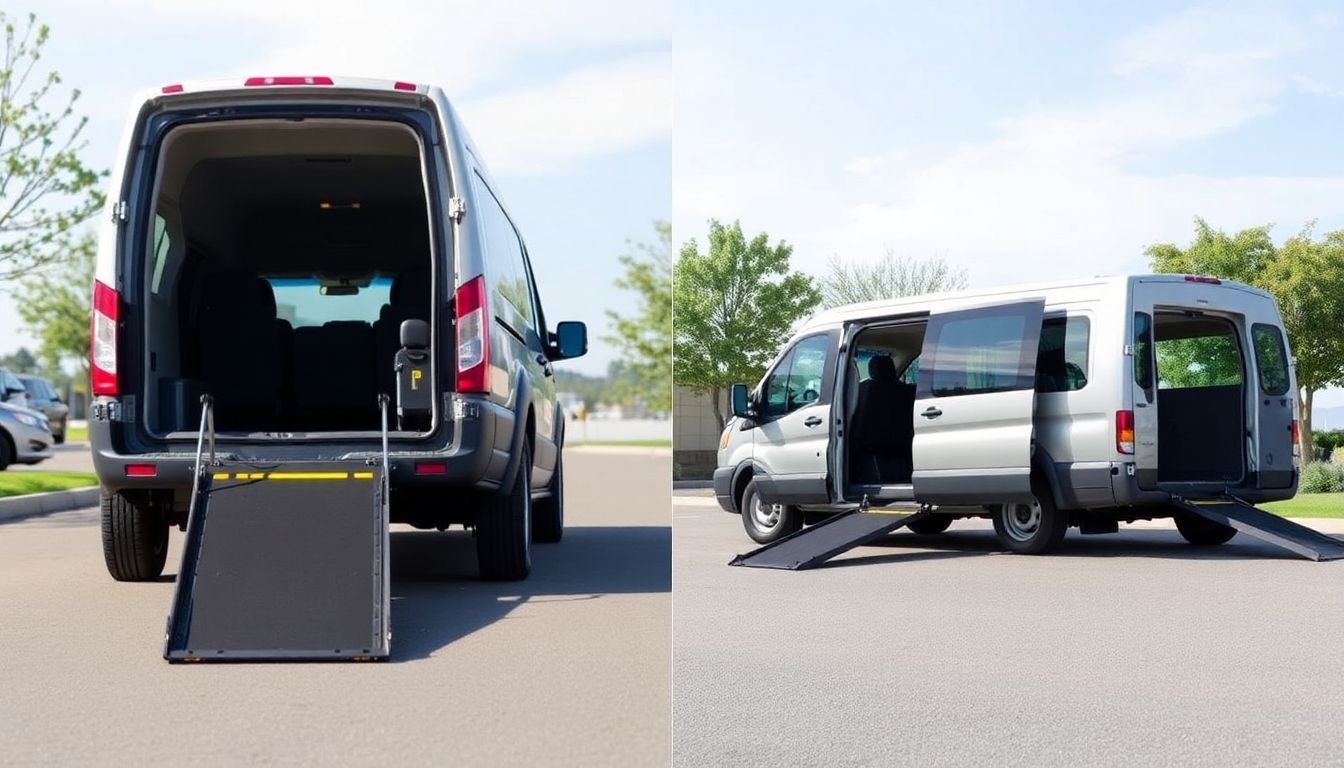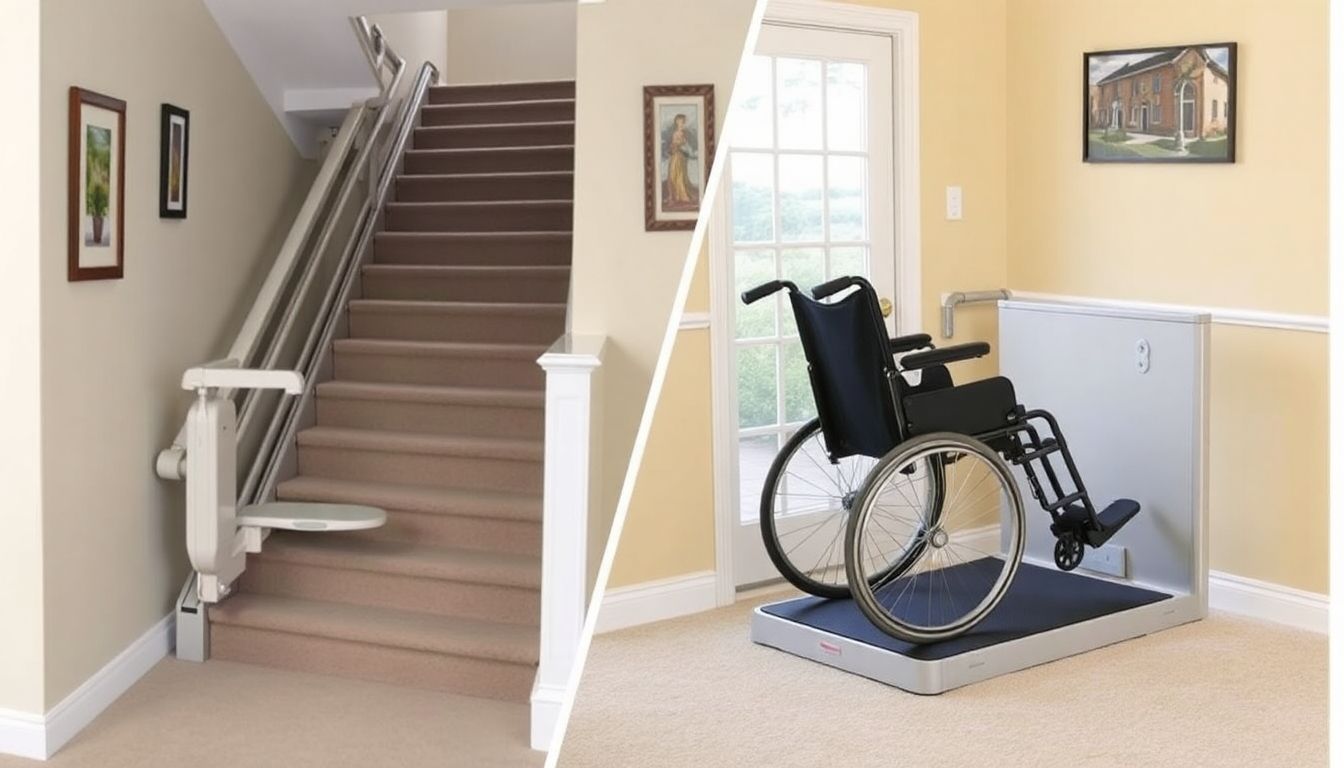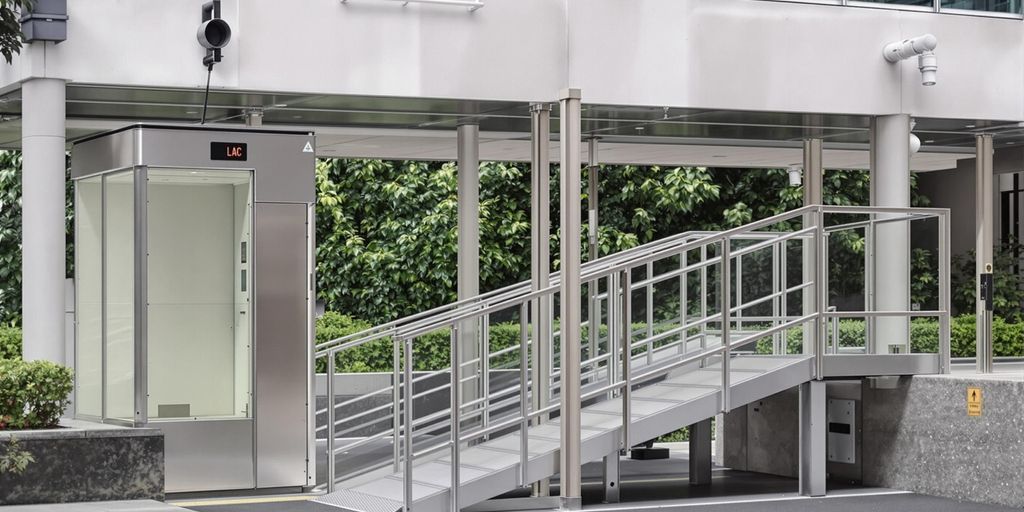Planning Ahead: Key Insights Before Adding a Ramp to Your Front Entrance


Thinking about putting a ramp at your front door? It's not just about making things easier; it's about safety and independence. Whether it's for you or a family member, planning is key. From picking the right materials to understanding local rules, there's a lot to consider. Let's break it down so you can make the best choice for your home and needs.
Key Takeaways
- Consider the ramp's purpose and who will use it most.
- Choose materials that can handle the weather in your area.
- Understand the slope requirements to ensure safety and comfort.
- Incorporate the ramp into your home's existing landscape and design.
- Check local building codes and permits before starting construction.
Understanding the Basics of Wheelchair Ramp Installation
Key Considerations for Home Entry Ramps
Thinking about adding a ramp to your home? It's not just about laying down some wood or metal. First off, consider the space you have. Measure the area where you plan to install the ramp and think about the best entry point. Ask yourself, "Is there enough room for a smooth transition?" A transition plate can help here, ensuring the ramp meets the ground or threshold seamlessly.
Next, think about the people using it. Will it be for a wheelchair, walker, or both? This will affect the width and weight capacity of the ramp. Also, consider the weather in your area. If you live somewhere wet, you might need a ramp with a non-slip surface to prevent accidents.
Choosing the Right Materials for Durability
Materials matter—a lot. When picking what your ramp will be made of, think about durability and maintenance. Aluminum is lightweight and rust-resistant, making it a popular choice. Wood, on the other hand, can blend nicely with a home’s exterior but may require more upkeep, especially in wet climates. Concrete is another option, offering sturdiness but being more permanent and costly.
Here's a quick list to help you decide:
- Aluminum: Light, rust-proof, low maintenance.
- Wood: Aesthetic, needs sealing, can rot.
- Concrete: Durable, expensive, permanent.
Understanding Slope and Rise Requirements
The slope of your ramp is crucial for safety and ease of use. A common guideline is the 1:12 ratio—for every inch of rise, you need at least 12 inches of ramp length. This gentle slope ensures that users can navigate it without too much effort. However, if space allows, a more gradual slope, like 1:16, can be even better.
Remember, local regulations might have specific requirements, so it's important to check these before starting your project. In some areas, especially for public buildings, the rules can be stricter.
A well-planned ramp not only improves accessibility but also adds to the overall safety and functionality of your home. Taking the time to plan and choose the right materials and design will pay off in the long run.
Designing a Ramp for Your Home's Aesthetic
Incorporating Ramps into Landscaping
When you're thinking about adding a ramp, it's not just about function—it's about making it look good too. Imagine your ramp as a natural extension of your home, blending seamlessly with your garden or yard. With the right design, a ramp can become a beautiful feature. Consider using materials like stone or wood that match your existing landscape. You might even think about adding plants or flowers along the sides to soften the look and make it more inviting. Explore rampscaping tips for creative ideas.
Choosing Colors and Finishes
The color and finish of your ramp can really tie it into your home's overall look. Think about the colors already present in your home's exterior and try to match or complement them. A well-chosen color can make the ramp feel like it's always been part of the house. Whether you go for a natural wood finish or a painted look, make sure it's something that will stand up to the weather and wear over time.
Balancing Functionality with Style
It’s important to strike a balance between how the ramp looks and how it works. A ramp should be easy to use, but that doesn’t mean it can’t be stylish. Consider features like textured surfaces for grip, which can also add visual interest. Handrails can be both a safety feature and a design element if you choose materials that complement the ramp. Remember, a ramp that's part of your home should feel like a natural addition, not an afterthought.
Designing a ramp that fits your home's aesthetic isn't just about appearance—it's about creating a space that's welcoming and accessible for everyone. With a thoughtful approach, your ramp can be both practical and pleasing to the eye.
Safety Features to Enhance Ramp Accessibility
Installing Handrails and Guardrails
Adding handrails and guardrails to your ramp is a big deal for safety. Handrails give essential support, helping prevent falls and making it easier to use the ramp. Guardrails, on the other hand, stop users from accidentally rolling off the sides. When picking handrails, consider the height and grip. They should generally be between 31 and 34 inches high and easy to hold. The diameter is usually around 1.5 inches, but it can be smaller if needed. Guardrails should be at knee height when seated, typically 18 to 20 inches. Don't forget to check your local building codes to make sure everything's up to snuff.
Non-Slip Surface Options
A ramp's surface needs to be non-slip to keep everyone safe, especially when it's wet. You can choose from a bunch of options, like textured rubber mats, non-slip paint, or adhesive strips. These materials help with traction, reducing the risk of slips and falls. It's a good idea to test out a few different materials to see what works best for your ramp's location and your climate.
Lighting Solutions for Nighttime Safety
Good lighting is key for using ramps safely at night. You want to make sure the whole ramp is well-lit, but without causing glare. Consider installing LED lights along the edges or solar-powered lights that don't need much maintenance. Motion-activated lights can be a great choice too, as they only turn on when needed, saving energy. Proper lighting not only helps people see where they're going but also adds a layer of security around your home.
Safety isn't just about adding features; it's about making sure they work well together to create a secure and accessible environment for everyone. Keeping these elements in mind will ensure your ramp is as safe as it is functional.
For more on ramp safety, check out the ADA guidelines which detail the necessary slope requirements to ensure compliance and safety.
Legal and Regulatory Considerations
Before you start building a ramp, it's essential to know what your local building codes require. These rules can vary a lot from one place to another, so always check with your city or county office. Some areas might be more lenient, while others could have strict guidelines that you must follow. It's a good idea to ask about any specific materials or design features that are mandatory. Doing this research early on can save you time and headaches later.
Getting the right permits is a big part of the process. Many places require a building permit before you can start construction. This is especially true for permanent structures. If you're thinking about a temporary ramp, the rules might be different. Here's a quick list to keep in mind:
- Check if your project needs a permit.
- Gather necessary documents like site plans.
- Submit your application and wait for approval.
While the Americans with Disabilities Act (ADA) mainly applies to public spaces, following its guidelines for home ramps is still a smart move. It ensures accessibility and can increase your home's value. The ADA suggests a slope ratio of 1:12, meaning for every inch of height, the ramp should be 12 inches long. Also, consider adding handrails if your ramp is higher than six inches. For more detailed standards, you might want to consult essential ADA compliance standards that provide additional tips beyond basic requirements.
Building a ramp isn't just about convenience—it's about making sure everyone can access your home safely and easily. By understanding these legal and regulatory considerations, you're taking the right steps towards a more accessible future.
Cost and Budgeting for Ramp Installation
Estimating Material and Labor Costs
Before diving into the project, it's important to get a handle on the potential costs involved in adding a ramp to your home. The price can vary widely based on materials, design complexity, and labor. Permanent ramps can range anywhere from $1,000 to $6,000, while semi-permanent options might cost between $350 and $2,000 for installation. Factors like the weight of materials and the intricacy of the design will also play a role in the final expense.
When considering materials, wood, aluminum, and concrete are common choices, each with its own cost implications. Wood ramps, for example, might set you back between $2,000 to over $10,000. Aluminum ramps are typically more durable and can range from $1,000 to upwards of $10,000 depending on the complexity and materials used. Concrete ramps, being more permanent, might also cost from $2,000 to over $10,000.
Exploring Financing Options
If the costs are daunting, don't worry—there are several financing options available. Veterans Affairs (VA) offers waivers for veterans needing accessibility modifications. Medicaid Waiver programs in certain states can also cover ramp costs, so check with your local Department of Health & Human Services. Some companies even offer consumer financing with monthly payments, though this usually requires a down payment and is dependent on your credit score.
Other avenues include home improvement loans, reverse mortgages, or local grants aimed at disability accommodations. It's worthwhile to explore these options to ease the financial burden.
Cost-Saving Tips for Homeowners
Looking to save some cash? Here are a few tips:
- DIY Elements: If you're handy, consider doing parts of the project yourself, like painting or sealing, to cut down on labor costs.
- Material Choices: Opt for less expensive materials or look for sales and discounts at local hardware stores.
- Simple Design: A straightforward design can significantly reduce costs. The fewer turns and landings, the less you’ll spend.
Budgeting for a ramp doesn't have to break the bank. With some research and planning, you can find ways to make it more affordable. Remember, a well-planned ramp is an investment in accessibility and ease of living.
Maintenance and Longevity of Your Accessibility Ramp
Regular Inspection and Upkeep
Keeping your ramp in top shape is all about regular check-ups. Think of it like taking your car in for a tune-up. Inspecting your ramp regularly can catch minor issues before they become big problems. Here’s a simple checklist to follow:
- Check for loose screws or bolts: These can make the ramp unstable.
- Look for signs of wear and tear: Especially on the ramp's surface.
- Examine the handrails: Make sure they’re secure and not wobbly.
Regular maintenance isn’t just about avoiding repairs; it’s about ensuring safety and peace of mind.
Weatherproofing and Seasonal Care
Your ramp faces the elements every day, so weatherproofing is key. During the winter months, make sure to keep ramps clear of snow and ice. You can use a plastic shovel or a stiff broom to avoid damaging the surface. Here’s what you should do as seasons change:
- Apply a protective sealant annually to prevent water damage.
- Make sure drainage is effective to avoid water pooling.
- Inspect for any cracks or splits after extreme weather.
Signs It's Time for Repairs or Replacement
No ramp lasts forever, so knowing when to repair or replace is crucial. Keep an eye out for these signs:
- Warped or sagging boards: This could mean structural issues.
- Persistent rust on metal parts: Rust can weaken the ramp.
- Surface peeling or cracking: A sign that the ramp isn't safe anymore.
If you notice any of these issues, it might be time to call in a professional. Keeping your ramp well-maintained ensures it remains a safe and reliable access point for years to come.
Working with Professionals for Optimal Results
Picking the right contractor for your ramp project is a big deal. You want someone who knows their stuff and can handle the specifics of your home. Look for a contractor with experience in accessibility projects. Ask around, maybe your neighbors or friends have recommendations. Also, don't forget to check out reviews online to see what others have to say. It's all about finding someone you can trust to do the job right.
Bringing in an accessibility expert can really make a difference. They can give you insights on how to make your ramp not just functional, but also a good fit for your home. Consider these steps:
- Hire an expert for a detailed assessment of your needs.
- Ask for suggestions on materials and designs that work best.
- Ensure they are familiar with modular ramps and other flexible solutions.
An expert's advice can help tailor your ramp to suit both your needs and your home's style.
Safety is key when it comes to ramps. A professional can ensure everything is up to code and safe to use. Here’s a quick checklist to keep in mind:
- Verify that the slope and rise meet local regulations.
- Check that materials used are durable and weather-resistant.
- Confirm that handrails and guardrails are properly installed.
Remember, a well-installed ramp not only boosts accessibility but also adds to your home's overall value and appeal. Working with the right professionals can make this process smooth and stress-free.
When you work with experts, you can achieve the best results for your mobility needs. Our team at North Georgia Mobility is here to help you find the right solutions, whether it's a van conversion or a vehicle lift. Don't wait any longer—visit our website to get a free quote today!
Conclusion
Adding a ramp to your front entrance is more than just a construction project; it's about making your home more welcoming and accessible for everyone. Whether it's for a family member, a friend, or yourself, a ramp can significantly improve mobility and safety. Before you start, take a moment to think about the layout, materials, and any potential obstacles. Consult with experts if needed, and don't rush the process. A well-planned ramp not only enhances accessibility but also adds value to your home. So, take the time to plan carefully, and you'll create a space that's both functional and inviting.
Frequently Asked Questions
What should I think about when adding a ramp to my home?
Consider the slope, materials, and space available. Make sure the ramp is safe and fits well with your home's look.
How can I make my ramp safe for everyone?
Add handrails and use non-slip materials. Also, ensure the ramp is well-lit, especially for nighttime use.
Do I need a permit to build a ramp at my house?
Yes, many places require a permit. Check with your local building department to understand what rules you need to follow.
What are some budget-friendly ways to build a ramp?
Use simple materials and do some work yourself if you can. Look for financial help or grants for accessibility improvements.
How do I keep my ramp in good condition?
Regularly check for damage, clean the surface, and make repairs as needed. Weatherproof the ramp to protect it from the elements.
Can a ramp be both useful and look nice?
Yes, choose colors and designs that match your home. You can also add plants or decorations to blend the ramp into your landscaping.










